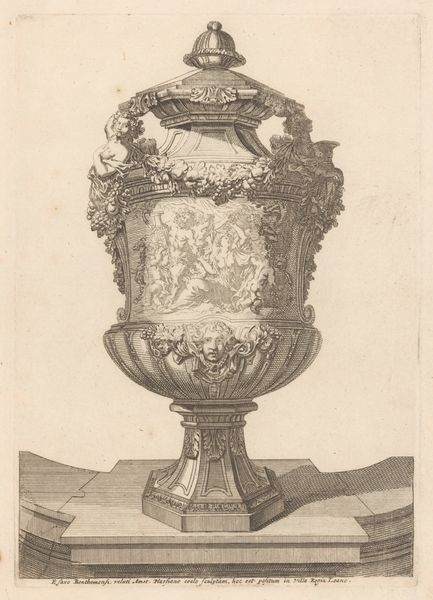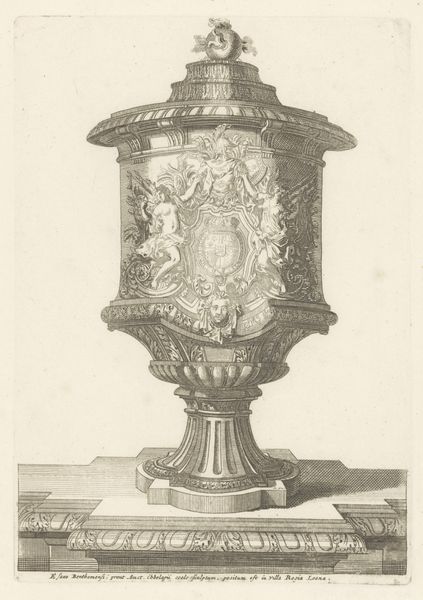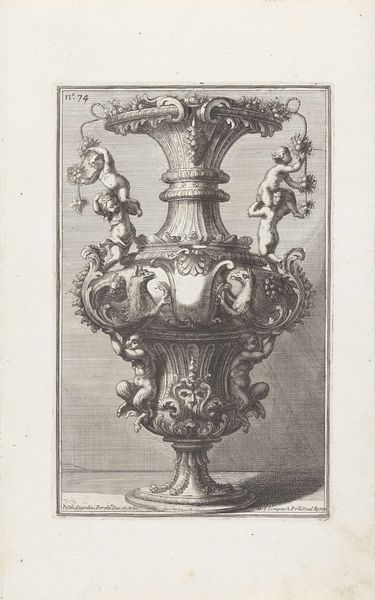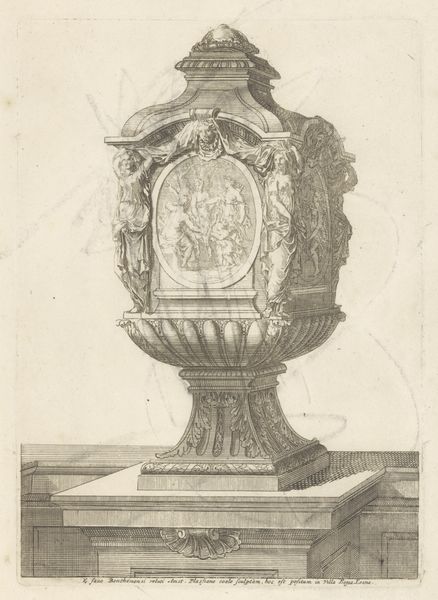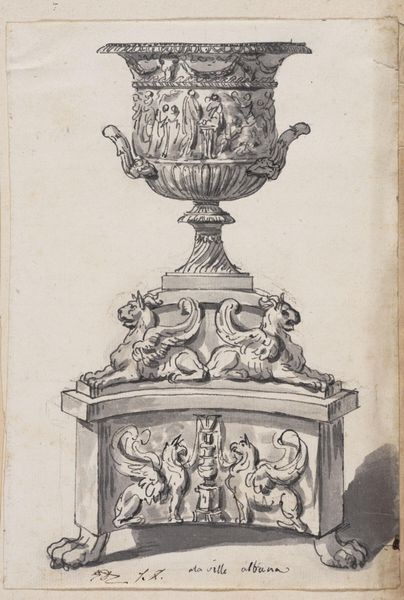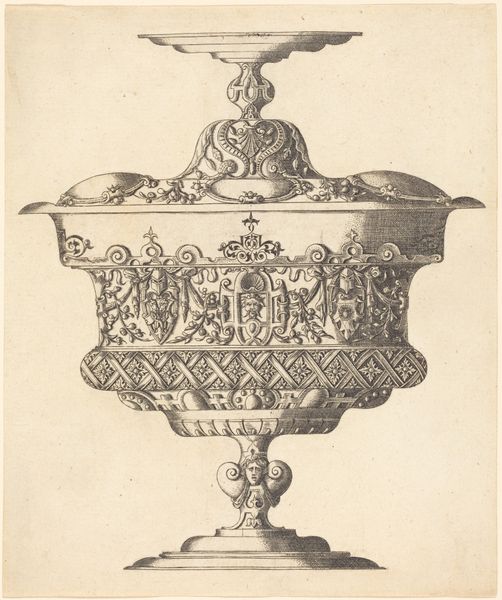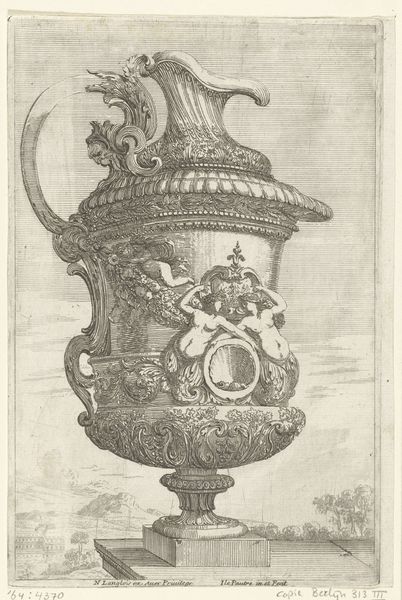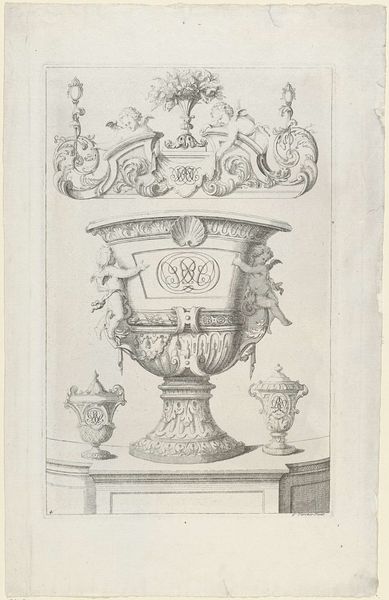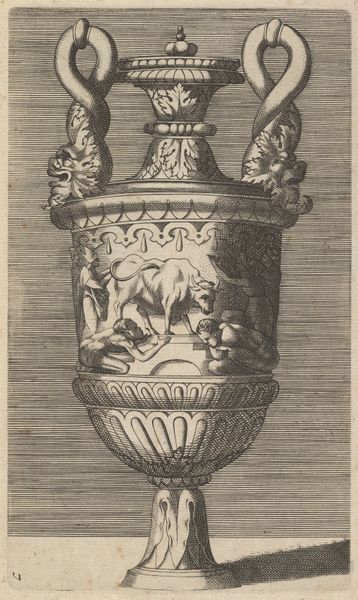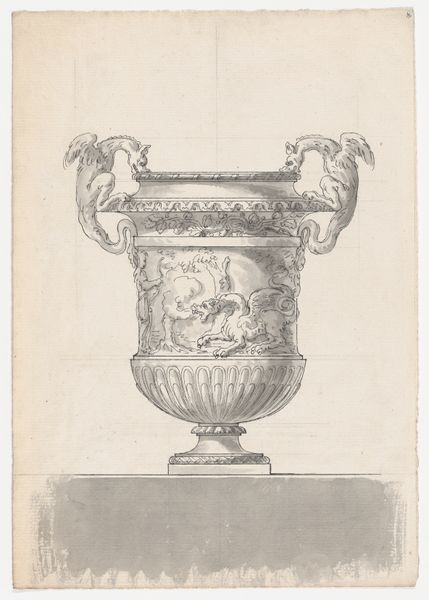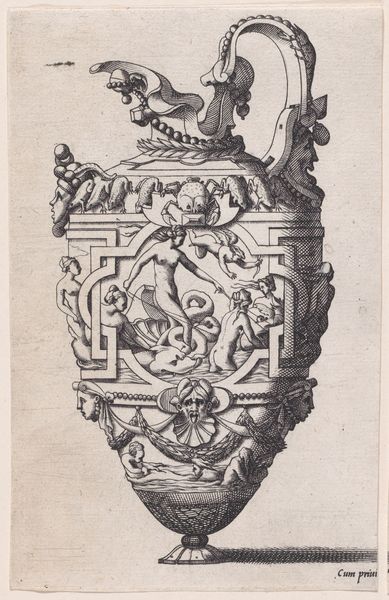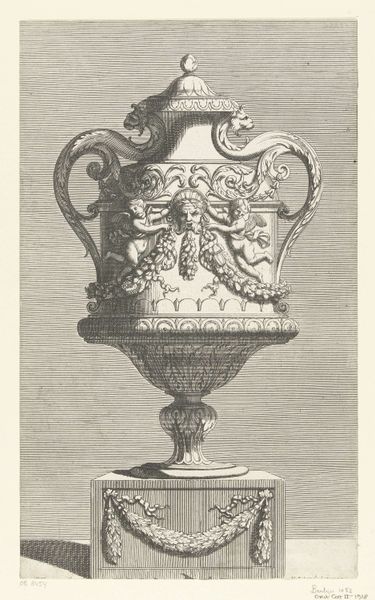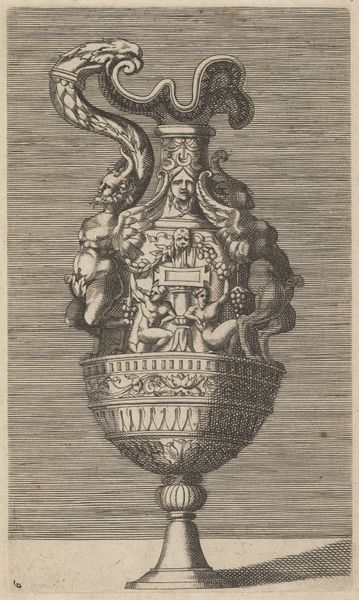
engraving
#
baroque
#
old engraving style
#
history-painting
#
engraving
Dimensions: height 252 mm, width 192 mm
Copyright: Rijks Museum: Open Domain
Curator: Before you is an engraving titled "Vaas met personificatie van Groot-Brittannië," which translates to "Vase with Personification of Great Britain," crafted by Daniël Marot, dating back to before 1703. It's part of the Rijksmuseum collection. Editor: My first impression? It's incredibly ornate! So much intricate detail etched into this seemingly simple object. The engraving gives it an almost sculptural presence, even on paper. But all those symbols... they reek of power. Curator: Precisely. The vase is depicted in the Baroque style, overflowing with allegorical symbolism. You see the crown atop the vase, the decorative carvings, and the central oval containing an allegorical figure. These elements are very much connected to the political climate of the time. It’s a constructed image intended to evoke power. Editor: Right. And given that title, we can assume that the central figure is meant to be Britannia, right? Seated regally with cherubs fawning over her? It reinforces a certain…narrative of British authority, even divine right. Look how her hand gently lays on the lion. And that Latin phrase on top "I Maintain" adds another dimension of justification, control and the act of holding dominance and influence. I bet Britannia is not alone here…it perpetuates a colonial, classist narrative that centers Britain's dominance on its global "possessions". Curator: Absolutely, though keep in mind Marot worked across Europe for different patrons. In this engraving, he might be commenting on or even subtly critiquing the displays of power favored by European monarchs. The act of commissioning artwork itself was strategic. Editor: But is Marot critiquing or complicit? Engravings like these were carefully disseminated; consider who could afford prints like these back then. Art always exists in context, right? So to look at the image only without talking about how art also serves as historical records can be short-sighted. The vase is just an object but who is celebrated with the vase matters. Curator: A valid point, it reminds us that even seemingly decorative arts are potent tools for propagating ideologies and that representation really does matter, still. Editor: This piece serves as a reminder to look critically, always. It might also be time to ask museums to start representing colonial objects with the very communities these vases are build upon and impacted. Curator: Indeed, these are complicated images from complicated histories, open to revision.
Comments
No comments
Be the first to comment and join the conversation on the ultimate creative platform.
